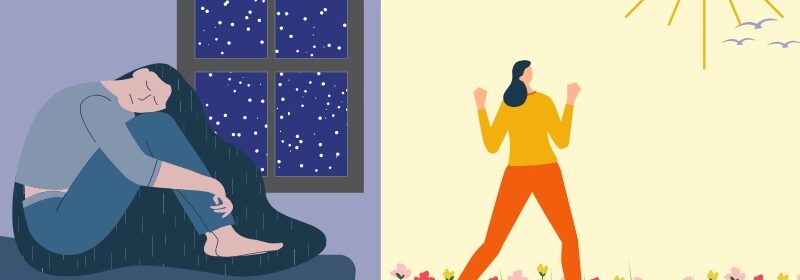Seasonal Depression: You’re Not Alone

ELIZABETH CONNER – Although many enjoyed the extra hour of sleep post-Tennessee win on Sunday, November 6th, this shift in time also signals a shift towards the winter season and the shorter days that come along with it. Maybe you enjoy waking up to the bright sun peeking in your windows signaling daytime, but for many, the darkness and cold temperatures infringing upon one’s daily activity cause adverse effects on one’s mental health which are often severe. Thus, one must question, is the reduced energy expenditure advertised by Daylight Savings Time worth it?
To determine how Daylight Savings time might affect youth, one study sought to investigate the sleep patterns of 40 students of high school age (grades 9-12) and how their sleep patterns changed post-DST. As a result, the study gathered that on average, sleep duration decreased by a mean loss of 32 minutes per night after “springing forward.” As well, the diligence of students working in high school decreased as evidenced by an increase in mean KSS (Karolinska Sleepiness Score) the week following shifts to Daylight Savings Time. Therefore, maybe implementing Standard Time year-round could help maintain student efficiency and sleep patterns.
For those wondering why their attitude might be changing in the current season, a phenomenon known as Seasonal Affective Disorder (SAD) might be your answer. The symptoms of SAD are characterized by beginning and ending around the same time each year. Most affected by SAD contribute their symptoms to the Winter and Fall seasons exhibiting listlessness, loss of interest, sluggish feelings, increased sleep, and weight gain, among others. One of the key contributors to SAD, of course, is the disruption of Circadian Rhythm. With the sun setting at earlier hours, activities once performed at such time intervals may no longer be possible and sleepiness could be induced leading to further feelings of depression.
Unfortunately, the causes of SAD are yet to be fully understood. Much of the research present, however, suggests that decreased sunlight may have a large effect on the maintenance of serotonin levels, which help to regulate the mood, present in the body. In those with SAD, the early nights of winter provoke dysfunction in such maintenance of serotonin levels. Exasperating this level of this neurotransmitter is the lack of Vitamin D experienced in Winter, for Vitamin D is also known to promote Serotonin levels. Other research suggests that those affected by SAD may also overproduce melatonin. Melatonin is vital to healthy sleep patterns and with more present, sleepiness is inescapable.
So, what is one to do when Circadian Rhythm is disrupted twice a year? Many suggested that Cognitive Behavioral Therapy, or talking therapy, can greatly influence the healing of those with SAD. Simply discussing, reasoning through feelings, and replacing negative attitudes toward a particular season with positive ones has shown to be beneficial in those with SAD. Secondly, nutritional supplements of Vitamin D for those experiencing Winter-related SAD have also proven to be effective in restoring serotonin levels. Overall, to those experiencing feelings of depression or anxiety as a new season approaches, understand that you are not alone. Hopefully, further solutions to SAD can be discovered in the future, and until then, the pros and cons of longer park days in the summertime can be pondered.
Copy editor – Yeongseo Son
Photography source – https://adaa.org/understanding-anxiety/depression/SAD
